“But do you want to be Good, Great, or Transformational? “
I asked a CEO a few years ago during a strategy conversation. I could see the hesitation in their eyes before they answered:
“With the work we do and the inequities we are trying to address in our community, I didn’t know we had any other choice but to be transformational. But at the same time, I’m not sure we have the time or resources to get there. Right now, we are just hoping to get a little bit better every day, hoping to be transformational one day. We want more; we just don’t know how to get there.”
This story feels all too familiar in the social impact space. I’ve heard versions of it over and over from leaders who want to make meaningful, systemic change but feel overwhelmed by the barriers in front of them. The truth is the idea of creating transformational organizations isn’t new. And let’s be honest—organizations like FSG and Bridgespan have been doing this work for years, setting the stage for us to build on.
But something has shifted in the last five years.
We’ve faced unprecedented challenges. The global pandemic didn’t just disrupt our work; it reshaped the landscape entirely. Organizations that had once been striving for transformational impact suddenly found themselves in crisis mode, reacting to an emergency they didn’t see coming. The focus shifted away from long-term goals to day-to-day survival.
And honestly, it wasn’t just an external crisis—it created an internal epidemic in the social impact sector. We were no longer talking about transformational change or even incremental improvement.
We were just trying to survive.
Overnight, everything we knew about leading organizations and serving our communities flipped upside down. Organizations were in survival mode, trying to navigate the uncertainty, and many of us have been stuck there ever since.
As we regain our footing, many organizations still operate with a survival mindset. But the truth is, we can’t stay there forever. If we want to fulfill our promises to the communities we serve, we need to move beyond survival mode and get back to the work of transformation.
We can reimagine how we show up for our communities and lead our organizations through the next growth phase.
That’s where the real impact happens.
Transformational isn’t a new concept, but in this moment, it’s more relevant than ever. We’ve seen the cracks in our systems up close—and now we can build something better.
The Call to Transformation
In today’s world, where the challenges are increasingly complex, the social sector holds a unique responsibility. The communities we serve deserve more than good outcomes— lasting, transformational change. The stakes are too high to remain comfortable with what’s familiar. We can push beyond the boundaries of ‘good’ and ‘great’ and step into the realm of transformation.
As someone who has worked in the social sector for many years, I’ve often asked myself: Is good good enough? There have been times when our efforts met the immediate needs of our communities, programs ran smoothly, and stakeholders were satisfied. But deep down, I knew we could do more.
This realization made me understand that good is not enough in the social sector. The communities we serve deserve more than well-intentioned efforts that maintain the status quo—they deserve bold, transformational change that reshapes systems and creates long-lasting impact.
I’ve had many such moments of realization, where despite our best efforts, the impact was limited. These experiences pushed me to question and rethink our approach.
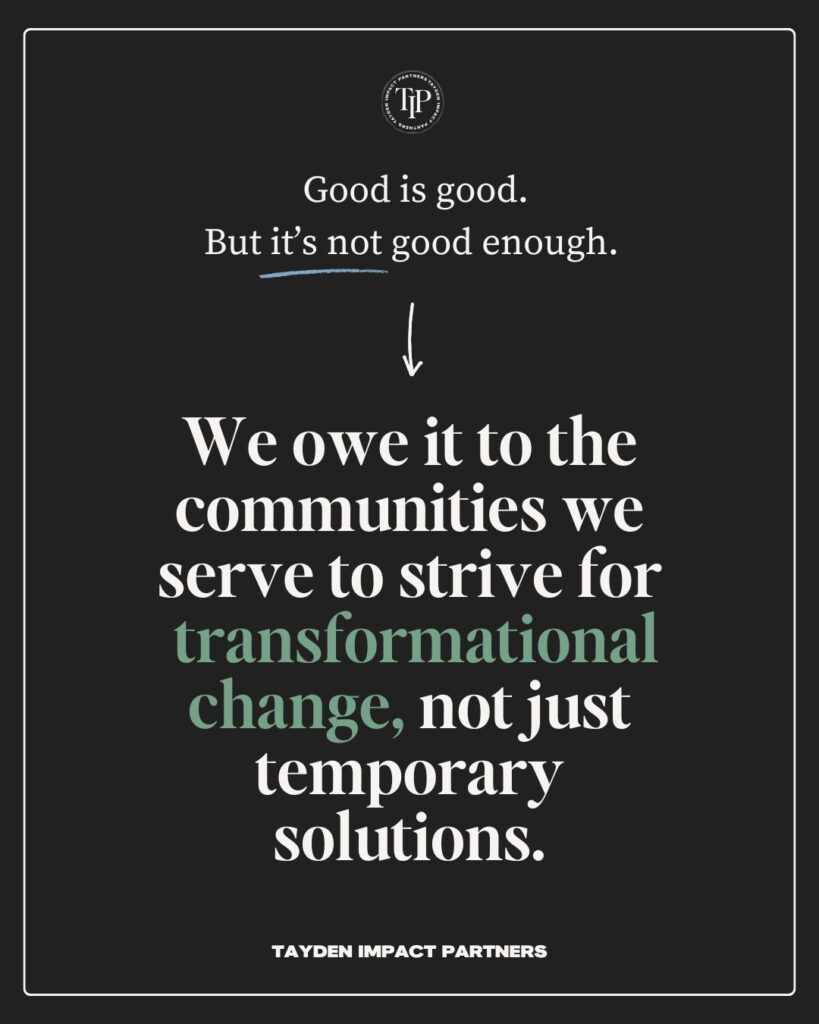
After much reflection, consultation with colleagues, and revisiting our mission, I continuously came back to the same answer:
Good is good.
But it’s not good enough.
We owe it to the communities we serve to strive for transformational change, not just temporary solutions consistently.
What Does It Mean to Be Transformational?
Let’s start with the basics. When I talk about being transformational, I’m not just talking about doing things better—I’m talking about redefining what better looks like. Transformational organizations don’t just meet their goals; they set new ones that push boundaries and change the game’s rules.
Being transformational means continuously innovating, adapting quickly to stay ahead of trends, and shaping the environment around you, influencing your sector and the larger social, economic, and environmental landscapes.
Here’s the thing: transformational organizations don’t sit back and wait for the world to change—they go out and change it themselves. They create new benchmarks for success and set the standard for everyone else to follow. And when they do it right, their impact doesn’t just stay within their organization—it ripples outward, changing how entire sectors operate.
I’ve never met a CEO who reads that definition and says, “I want to be less than that.”
But getting there? That’s where the hard work begins.
To discuss what we need to do to shift our organizations, we first need a common definition of transformative.
I’d offer this definition:
Transformative organizations achieve their goals, redefine industry standards, and create lasting systemic change. They go beyond maintaining operational efficiency or achieving high performance; they innovate continuously, adapt swiftly to emerging trends, and influence broader social, economic, or environmental landscapes.
Such organizations respond to external changes and shape the environment in which they operate. They set benchmarks for others to follow and create models of success that transcend their sectors.
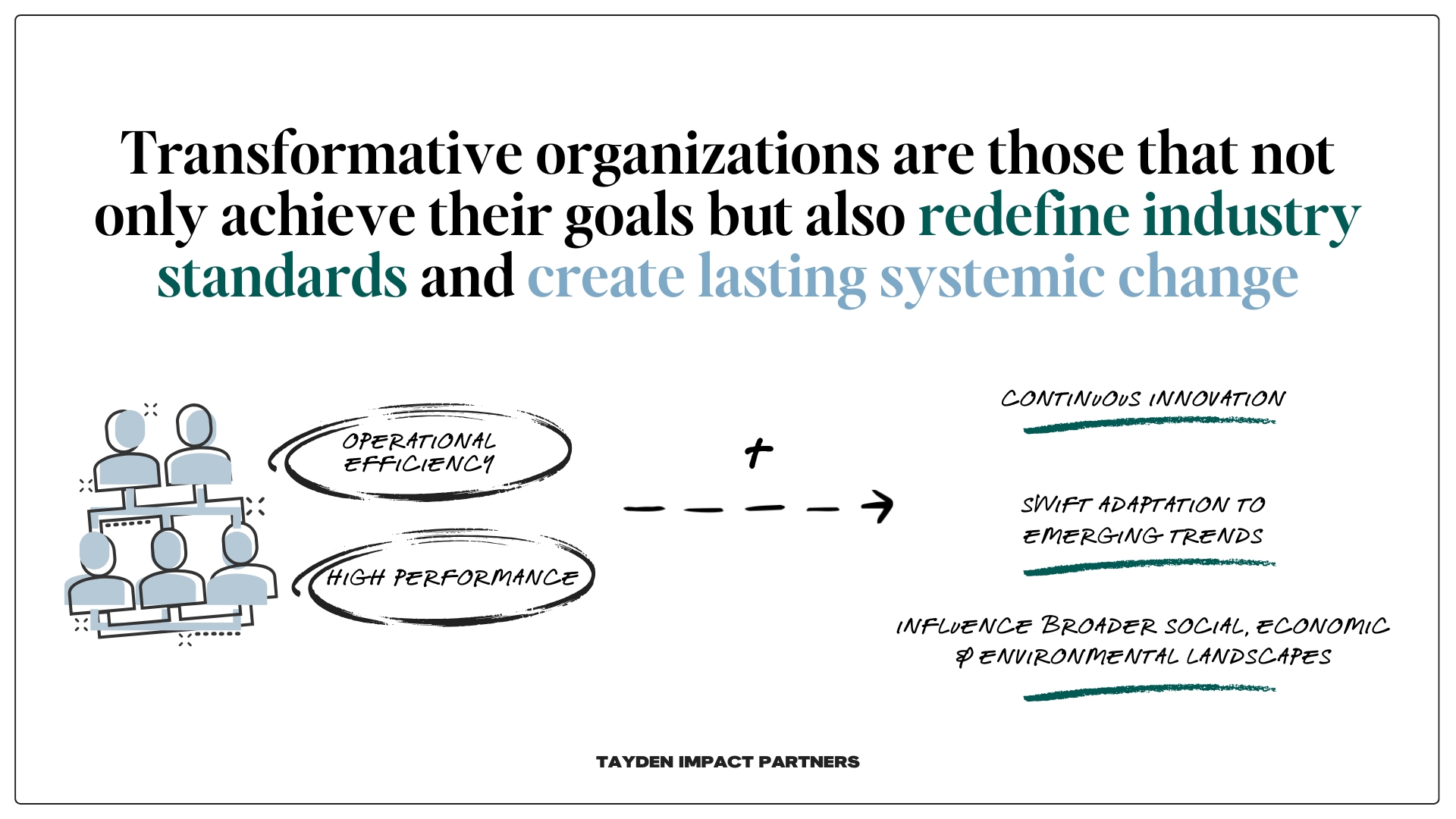
No CEO reads this and then says I want to be less than that.
These same CEOs?
They are realistic about their capability and capacity. The journey to becoming transformative is daunting but necessary, particularly in a mission-driven organization whose existence is driven by the intention to close a gap for the people it serves.
CEOs must balance their ambitious vision with a pragmatic approach, building the necessary infrastructure and capacity incrementally while keeping the ultimate goal in sight:
Good is not good enough for any social sector team. Transformative is the goal always…
even if good or great is the reality, initially
When Good Isn’t Enough
In the social sector, being “good” often means maintaining stability, meeting expectations, and delivering critical services. And let’s be clear—this work is vital. But good isn’t enough anymore, not when we are faced with such complex, systemic challenges.
Here’s the reality: Good organizations are essential but often focus on short-term goals or immediate needs. While important, these efforts are insufficient to address the deep, structural issues—poverty, inequality, and climate change—at the heart of the communities we serve. These problems require more than surface-level solutions.
Good organizations can provide stability and ensure operational efficiency, but they stop short of creating systemic change. They often don’t challenge the systems perpetuating inequities or the long-term barriers keeping communities from thriving. This is where we need to shift the conversation: If we want to make a real difference, we need to move beyond asking, “Is good enough?” and ask, “How do we become truly transformational?”
The Role of Good and Great Organizations in the Social Sector
In the journey from good to transformational, it’s important to recognize the roles of both good and great organizations in the social sector. Each is essential, but they serve different purposes.
1. Good Organizations: Building the Foundation
Good organizations are the backbone of the social sector. They ensure stability, operational efficiency, and the delivery of essential services. These organizations are vital because they meet the immediate needs of their communities. Without good organizations, there would be no infrastructure to support more innovative work.
But good is only the foundation. While good organizations provide critical services, they often address the symptoms of systemic problems rather than tackling the root causes. To truly make an impact, good organizations must challenge themselves to go beyond stability and begin addressing the more profound, systemic issues affecting their communities.
2. Great Organizations: Stepping Beyond Comfort and the Status Quo
Great organizations go further than meeting expectations. They push boundaries, align their work with a clear vision, engage deeply with stakeholders, and foster a culture of innovation. They set new standards and raise the bar for what is possible in the social sector.
However, even great organizations often fail to address the systemic issues that perpetuate inequality fully. Organizations need to fundamentally rethink how they operate to leap from great to transformational. It’s not just about scaling successful models—it’s about rethinking how organizations influence sectors and tackle long-term, complex challenges.
3. Transformational Organizations: Shaping the Future
Transformational organizations don’t just react to the world around them—they actively shape it. These organizations challenge the status quo, take calculated risks, and strive to create systemic, long-lasting change. The exciting part is that becoming a transformational organization isn’t reserved for a select few—it’s any organization’s choice.
Transformational organizations influence entire sectors and lead toward long-lasting change by challenging deeply rooted systems. They innovate, not just by doing more, but by doing better—by taking a long-term, strategic view that allows them to address root causes, not just symptoms.

Before You Can Transform
So, how does an organization get to the point where it’s transformational? Before we get into tactics, let’s talk about the shift in beliefs and infrastructure that need to happen first:
A Renewed Belief in Transformation
First things first—you’ve got to believe that transformation is possible for your organization. Getting stuck in a cycle of trying to survive or make small improvements is easy. But transformational change starts with a mindset shift. You have to believe that your organization can do more than just surviving and being good or even great. You have to accept that true transformation is not only possible but necessary for the work you’re doing.
That belief has to come from the top. The CEO’s job is to articulate a vision that inspires the entire organization, from leadership to frontline staff, and to create a culture where everyone is committed to aiming higher. This renewed belief in transformation helps break the cycle of complacency and sets the tone for what’s possible.
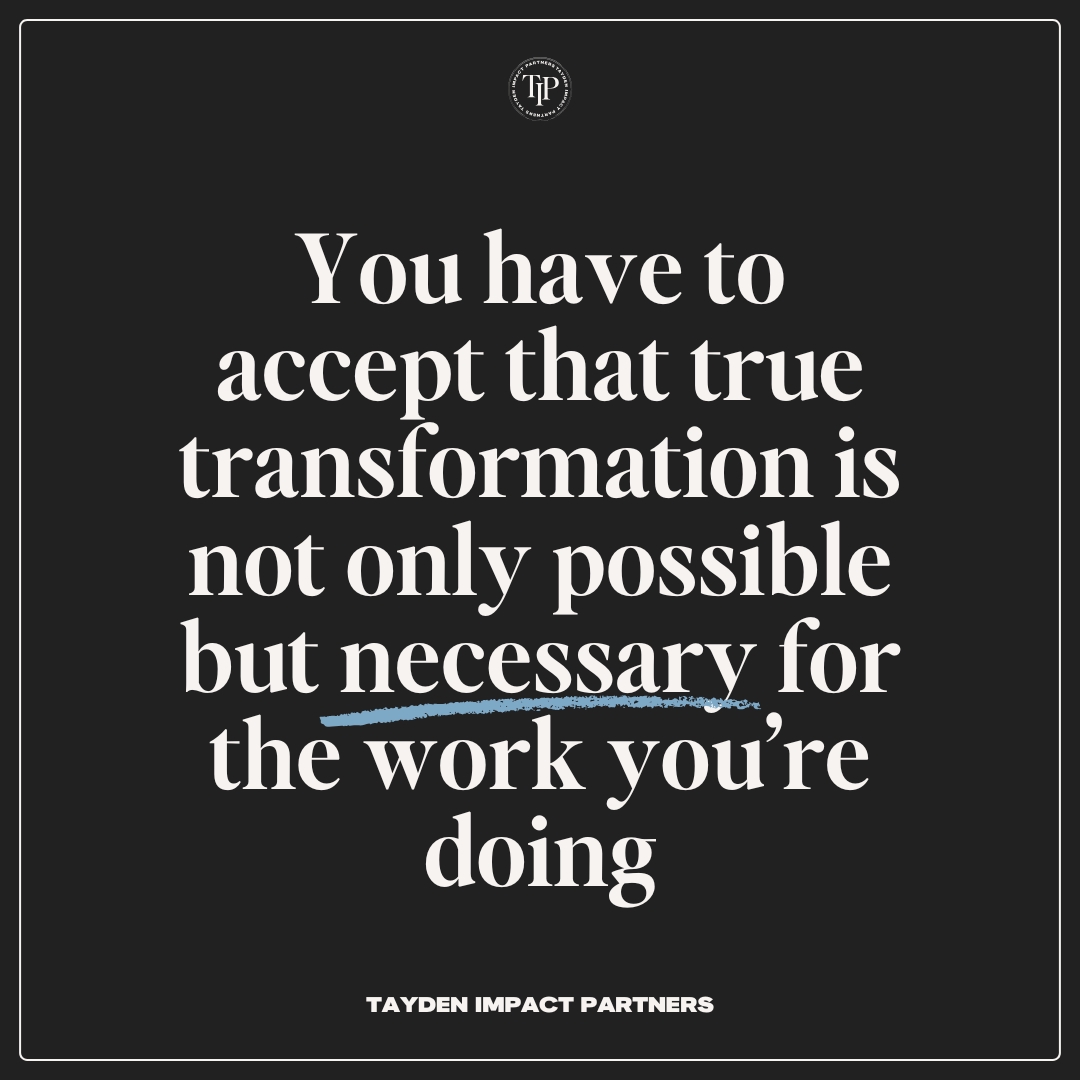
An Intentional Focus on Organizational Development
Transformation doesn’t just happen because you want it to. It requires intentionality—especially when it comes to developing your organization from the inside out. You can’t just slap a new strategy on top of an old structure and expect different results. You need to take a hard look at how your organization is built, how it’s growing, and how it’s aligning with your transformational vision.
And here’s where it gets tricky: This isn’t just about checking off boxes on an organizational development plan.
It’s about ensuring that everything you’re building—your leadership, your culture, your systems—supports long-term, sustainable growth. This is where the real work begins, and it’s why so many organizations get stuck in survival mode.
They never make the leap from fixing what’s broken to building something new.
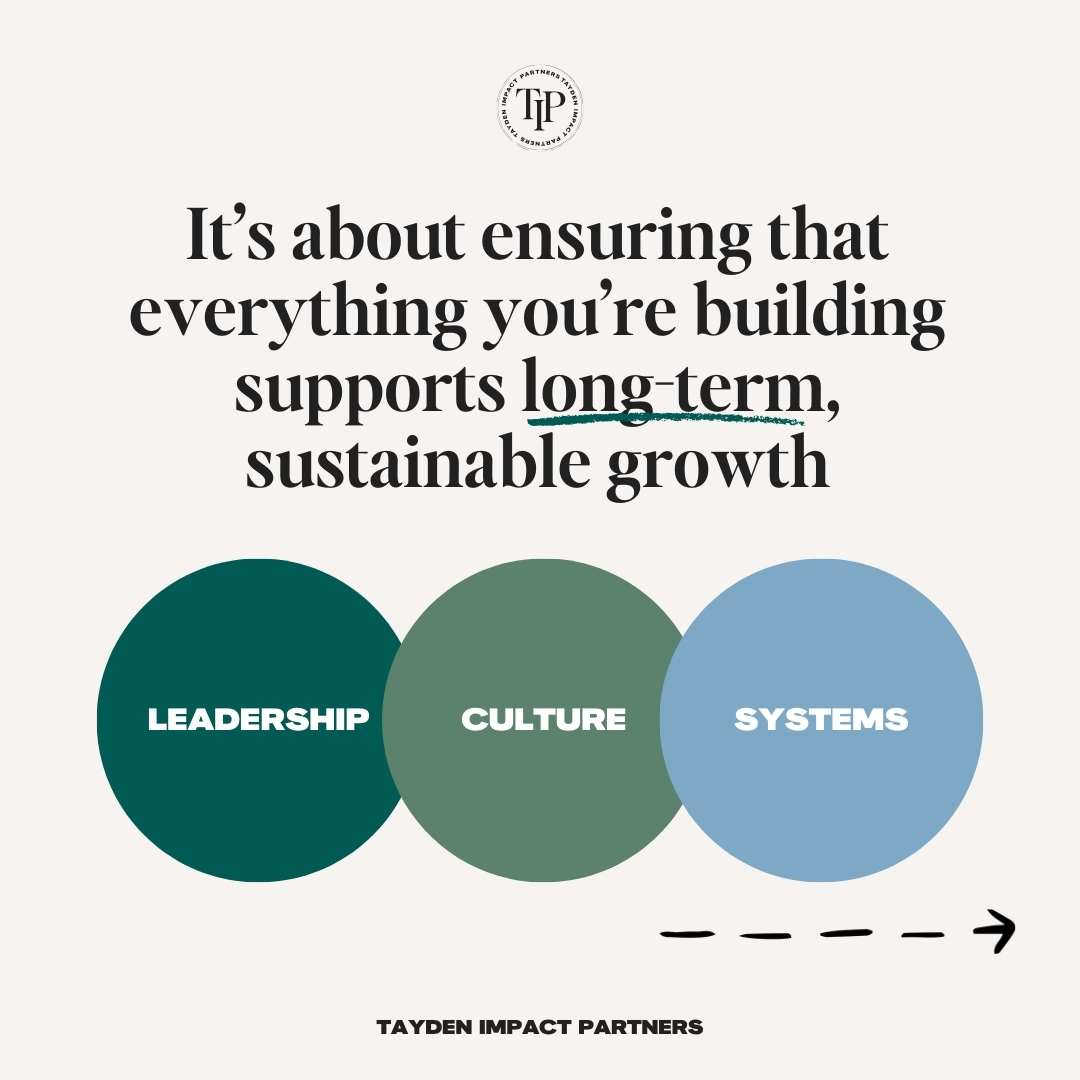
Accountability Mechanisms to Ensure Progress
Transformation doesn’t mean anything if you’re not holding yourself accountable. Let’s face it: these grand ideas fall flat without accountability. Accountability means setting clear, measurable goals and ensuring everyone— including the CEO—is responsible for progress. It’s not enough to talk the talk; transformational organizations walk the walk by consistently measuring their progress and adjusting their strategies as needed.
You need mechanisms in place to track performance, evaluate impact, and ensure that the organization is staying aligned with its vision for transformation. Without these systems, you’ll lose momentum, and before you know it, you’ll be back in survival mode.
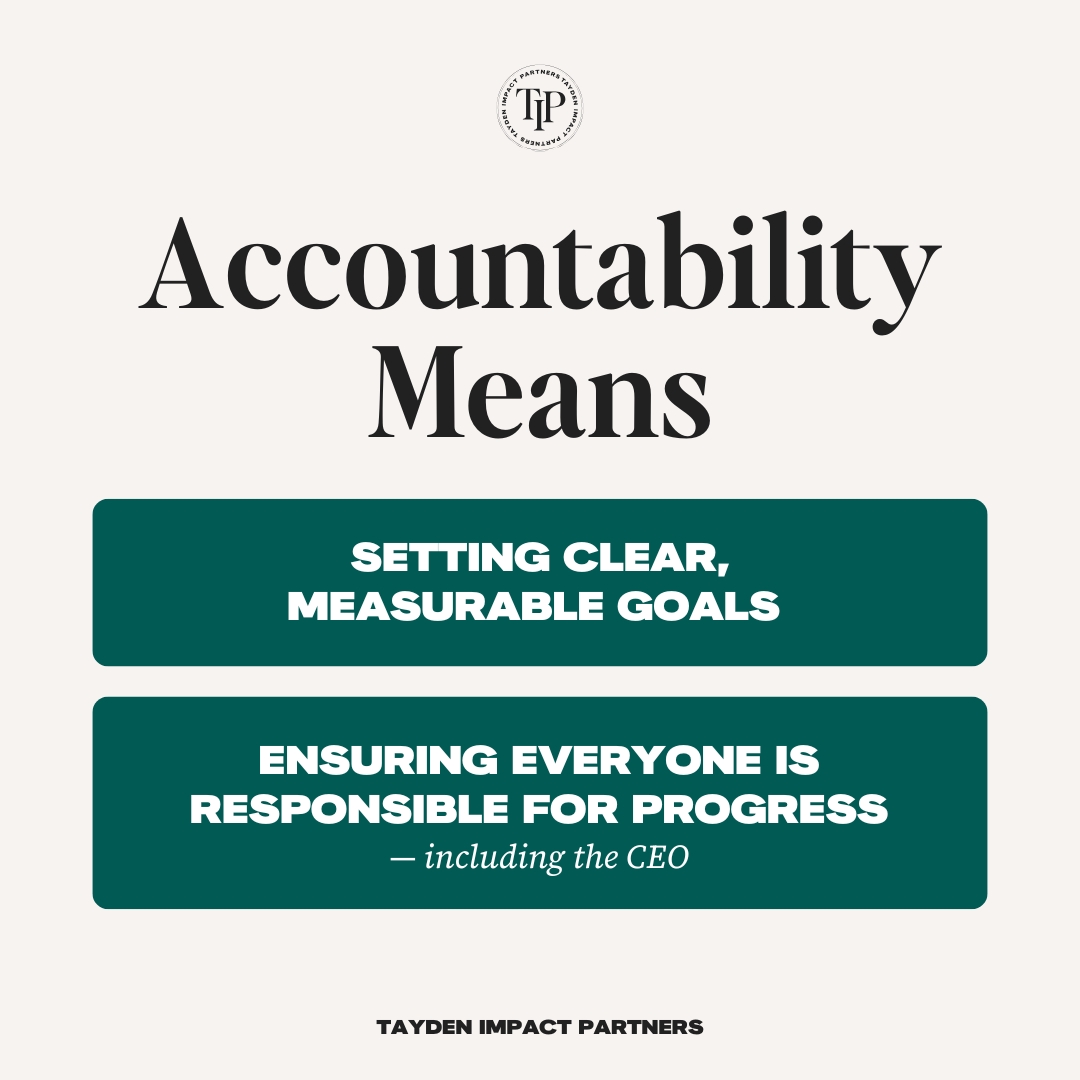
Moving from Good to Transformational
Social sector organizations need to rethink how they approach their work to move from good to transformational.

Incremental improvements are no longer enough—we need bold, comprehensive solutions. Below are four key strategies that can help organizations on this journey, with concrete examples to illustrate how each can be implemented.
1. Challenge the Status Quo
Good organizations often operate with the assumption that maintaining existing services and meeting immediate needs is sufficient. However, transformational organizations constantly challenge the status quo by asking critical questions about the broader impact of their work. This requires reflecting on what’s being done and examining why certain systems are perpetuated.
| Takeaway |
|---|
| Ask yourself, “What systemic issues are we addressing, and are our solutions truly getting at the root of the problem?” Organizations must consistently challenge the systems they operate in, refusing to settle for the status quo. |
2. Build a Culture of Innovation
Transformational organizations foster a culture of innovation where new ideas are encouraged, and risk-taking is seen as an essential part of progress.
This doesn’t mean disregarding what works—creating space for bold experimentation and learning from successes and failures.
| Takeaway |
|---|
| Organizations that encourage innovative thinking and embrace technology, even in areas where it hasn’t traditionally been applied, are more likely to find new solutions to old problems. Leadership must make space for experimentation and accept that failure is part of the path to breakthrough success. |
3. Align DEI with Strategy
Diversity, equity, and inclusion (DEI) must be more than a checkbox or isolated initiative—they need to be aligned with the organization’s core strategy. Transformational organizations use DEI as a lens through which all decisions are made, ensuring that equity and inclusion are not just afterthoughts but core drivers of mission and success.
| Takeaway |
|---|
| DEI isn’t a separate initiative—it’s a guiding principle that should inform everything from leadership composition to program design. Organizations that make DEI central to their strategy are more likely to drive systemic change in the communities they serve. |
4. Invest in Long-Term Solutions
Good organizations meet immediate needs, but transformational organizations invest in long-term solutions that address the root causes of their challenges.
This requires shifting focus from quick wins to sustainable, systems-level change that will make a lasting difference.
| Takeaway |
|---|
| Organizations need to balance addressing immediate needs with focusing on systemic, long-term solutions. The most impactful changes come from shifting from a short-term mindset to prioritizing sustainable outcomes and empowering communities to be part of the solution. |
The Power and Potential of Transformation
The beauty of the social sector lies in our collective commitment to making the world a better place. We are driven by a passion to create a future where communities thrive, inequities are addressed, and meaningful, lasting change is the norm. But to fully realize this potential, we must move beyond good intentions and ask ourselves the difficult questions: Are we willing to push ourselves, our organizations, and our sector toward true transformation?
If the last five years taught us anything, we are more resilient than we give ourselves credit for. We adapted, pivoted, and found ways to keep going even when everything felt like it was falling apart. But survival mode isn’t where we thrive. It’s time to stop reacting to crises and start shaping the future we want to see.
Good isn’t good enough anymore. The challenges we face today—climate change, systemic inequality, poverty—are too complex and deeply rooted for surface-level solutions. We have the opportunity, and I would argue, the obligation to aim for something bigger. It doesn’t mean we abandon the good work we’re doing, but rather that we expand upon it, building toward solutions that don’t just meet the immediate needs of the communities we serve but fundamentally change the systems that perpetuate those needs.
Transformation starts with a renewed belief in what’s possible. And that belief has to be backed up with intentional action. It means discussing diversity, equity, and inclusion and embedding it into every corner of the organization. It means investing in your people—not just hiring the best talent but nurturing them, developing them, and ensuring they have the tools to lead. It means creating a culture where innovation thrives, where people feel safe to speak up, take risks, and push the envelope.
Above all, it means holding ourselves accountable. Transformation doesn’t happen overnight, and it doesn’t happen just because we want it to. We need to set clear goals, measure our progress, and ensure we stay true to our vision every step of the way. If we aren’t willing to hold ourselves accountable, all the talk about transformation is just that—talk.
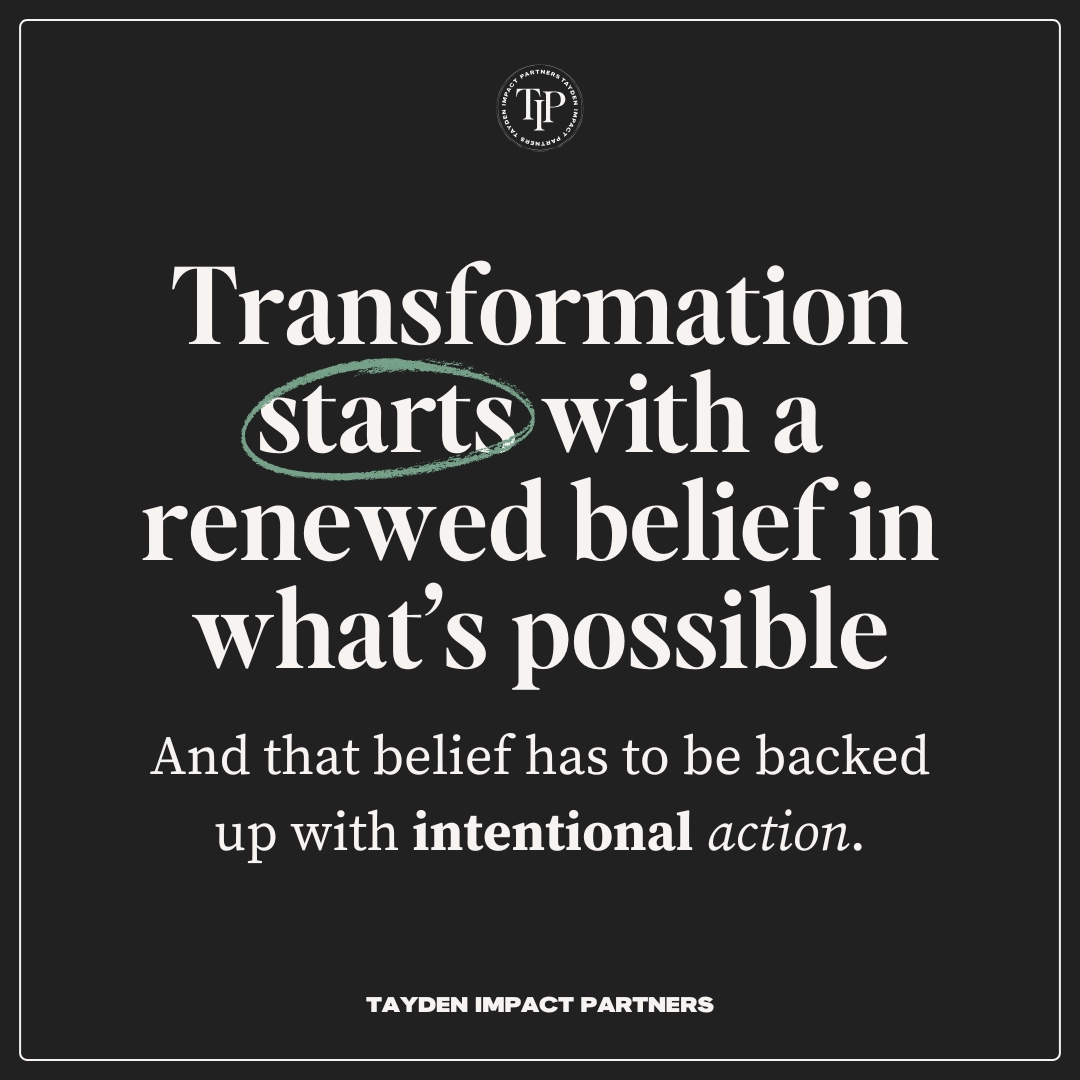
Becoming a transformational organization is a bold, intentional choice that any organization can make. It requires shifting our mindset from short-term fixes to long-term impact, from operational efficiency to systems change, and from well-intentioned efforts to strategic, innovative action. The path forward may be challenging, but the rewards—truly transformative, systemic change—are well worth the effort.

As we look to the future, we must ask ourselves: What kind of impact do we want to leave behind? Are we satisfied with maintaining the status quo, or are we willing to challenge it, innovate, and take the risks necessary to create a more just, equitable, and sustainable world?
The stakes are too high for us to settle for less.
The communities we serve need us to be bold, think bigger, and stop aiming for “good enough.” They need us to lead the charge toward a future where social impact organizations aren’t just meeting immediate needs but driving systemic, lasting change.
References
- Collins, J. (2001). Good to Great: Why Some Companies Make the Leap and Others Don’t. HarperBusiness.
- Heath, C., & Heath, D. (2010). Switch: How to Change Things When Change Is Hard. Crown Business.
- FSG. (2018). The Six Conditions of Systems Change.
- Bridgespan Group. (2019). Achieving Transformational Scale: Case Studies in Social Sector Innovation.
- McKinsey & Company. (2021). The Change Imperative: Leadership for a New Era.
- Equity in the Center. (2018). The Equity Imperative: Designing Organizations for Impact and Inclusion.
- Harvard Business Review. (2020). Leading Organizational Transformations.
- The Center for Effective Philanthropy. (2021). Nonprofit Resilience and the Impact of COVID-19.

